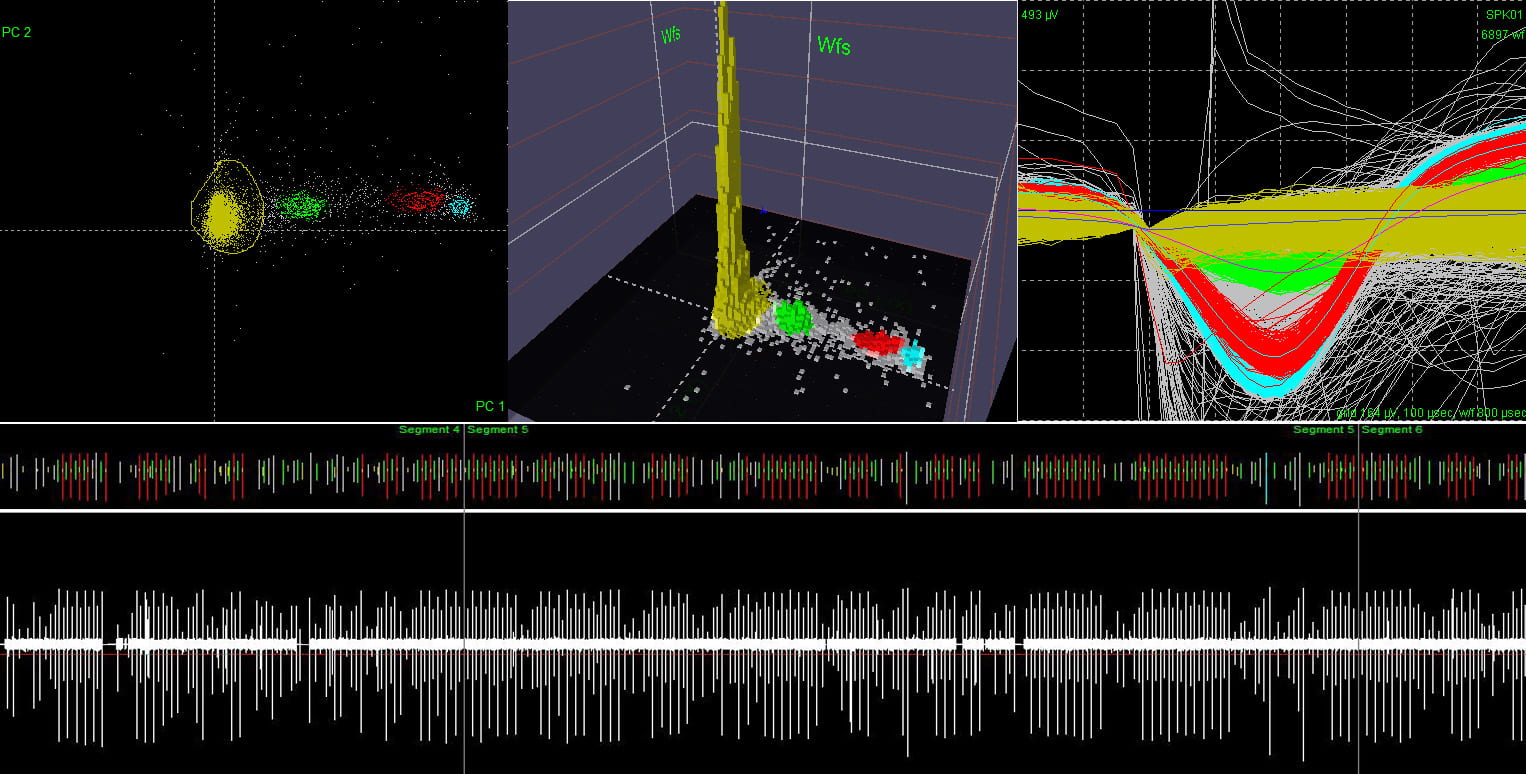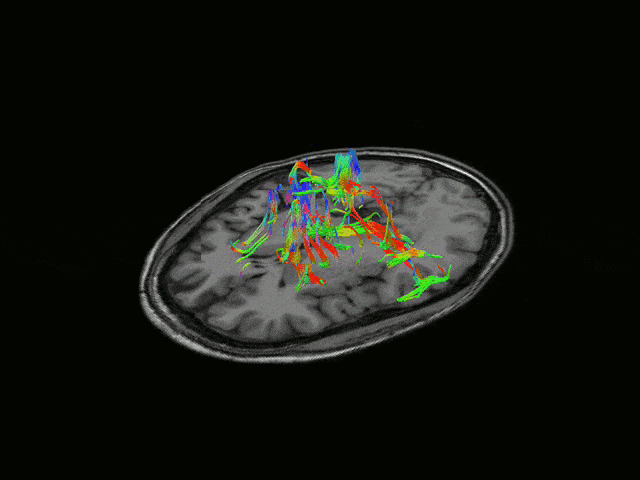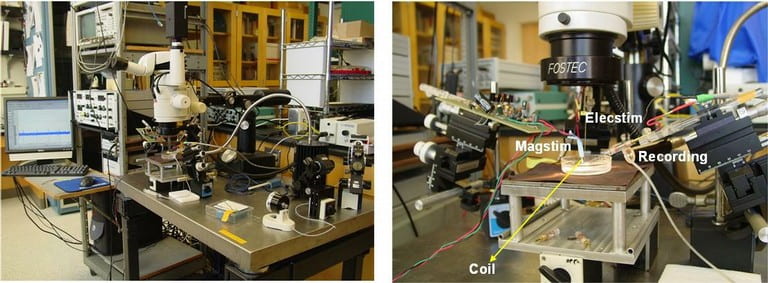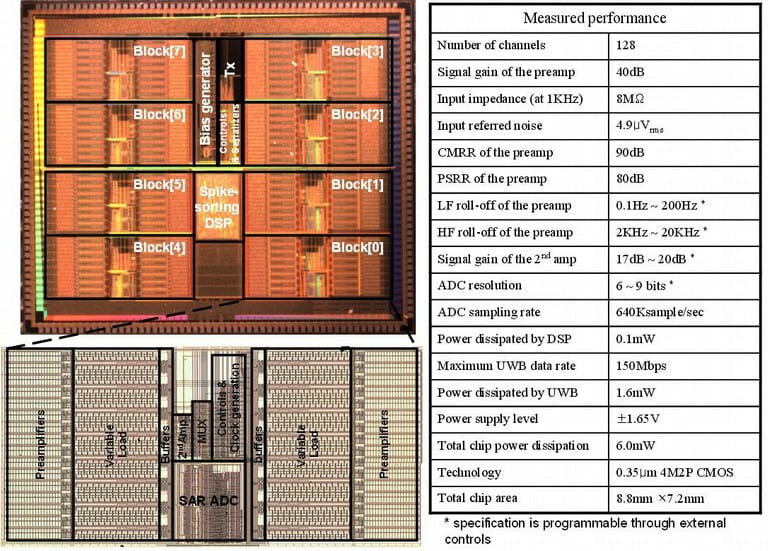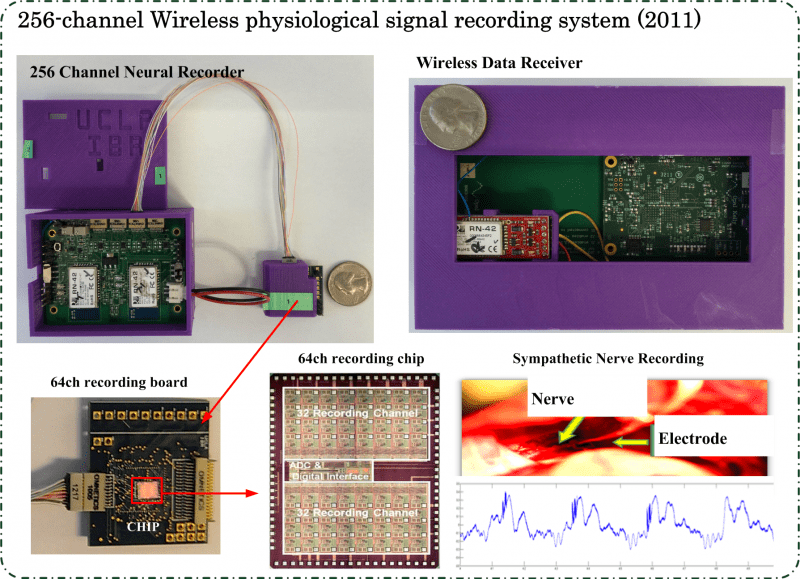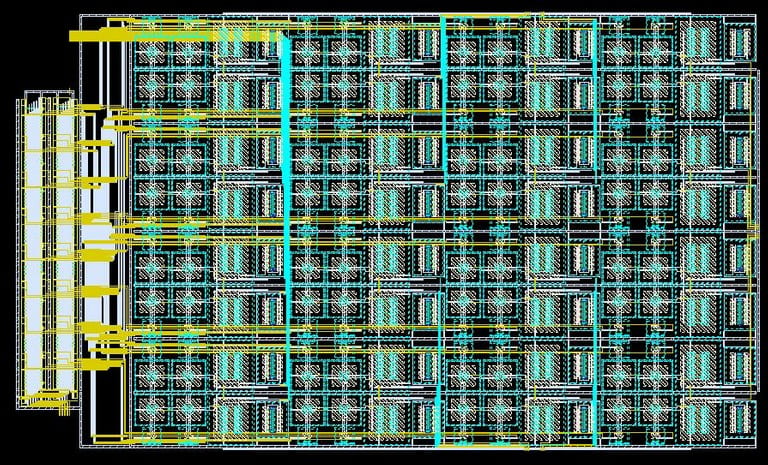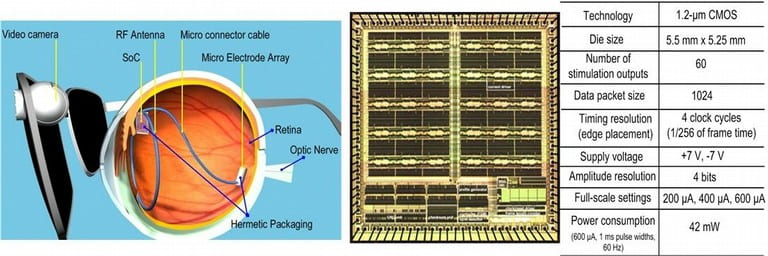We collaborate with Dr. Peyman Benharash, Department of Surgery, UCLA in stem cell differentiation with the help of electrical stimulation. The following is a demonstrational video of Cardiac Myocyte Cells. The sorting result shows that couple cell groups are beating separately. The cells is anticipated to be eventually grouped and beating together and form a patch for cardiac disease repair.
Brain Dynamics and Source Localization
Brain imaging techniques can help us explore the function of human brain (i.e. memory, behavior, etc.) and help diagnosis and treatment of brain disorders (i.e. seizure, depression, etc.). Imaging tool with high temporal and spatial resolution is highly desirable. Currently, fMRI is very popular since it offers high spatial resolution (~3mm); however, its temporal resolution is limited (~1s) and is impossible to be used in portable applications. EEG has excellent temporal resolution (~1ms), portable mobility that allowed to be used in daily life. Our goal here is to improve the spatial resolution of EEG to be as good as that of fMRI.
We study the brain dynamics and source localization based on realistic head model (NFT toolbox). On one hand, we are studying the influence of various factors (i.e. noise, electrode number, head model, inverse solution, etc.) on the accuracy of inverse imaging; on the other hand, we are developing more accurate inverse imaging algorithms.
Collaborators
- Prof. Scott Makeig, SCCN, UCSD
- Dr. Yue-Loong Hsin, Chung Shan Medical University, Taiwan
Neural Signal Processing and Telemetry
Recording from a large number of neurons produces vast quantities of data that is highly difficult to extract and interpret due to noise and aggregation of multiple neural signals in a single recording site. In addition to conventional techniques like spike sorting, component analysis, de-noising detection, we are focusing on the cellular and molecular levels to understand the fundamentals of neural signals and behavior of large group of neurons. We found that the traditional deterministic channel models are insufficient for the description of the activities of real neurons. We are currently developing the stochastic kinetic modeling of sodium channel and its validation with the measurement of gate current due to transmembrane protein movements in the order of several picoamps with the bandwidth of several hundred of MHz.
Selected Publications
- “A 12-channel 6mW Wireless Neural Recording IC with On-the-fly Spike Sorting and UWB Transmitter,” M. Chae, W. Liu, Z. Yang, T. Chen, J. Kim, M. Sivaprakasam, and M. R. Yuce, To appear in International Solid-State Circuits Conference, February 2008.
- “An Integrated Multi-Channel Neural Recording System,” M. Chae, W. Liu, and M. Sivaprakasam, BMES Annual Fall Meeting, September 2007.
Collaborators
- Huntington Medical Research Institutes
- Arizona State University
Non-Invasive Functional Magnetic Stimulation
Neural stimulation is commonly accomplished by a voltage or current pulse through a microelectrode. Ideally, a method would exist which inherently had zero net charge transfer, required only simple driver circuitry and was completely isolated from the tissue to reduce circuit failure due to corrosion and fouling by protein deposition. Magnetic stimulation achieves these goals. The presence of scar tissue or deposited proteins is irrelevant because the magnetic permeability of tissue is near that of free space. Excitation arises from the magnetic field which generates a current across the membrane of the cell which changes the resting potential of the neuron and triggers an action potential (the fundamental signal generation mechanism neurons employ). We are currently studying the fundamental mechanisms of magnetic stimulation, developing models and verifying through in vitro experiments.

Selected Publications
- “Functional Magnetic Stimulation for Epiretinal Prosthesis”, E. Basham, W. Liu, and M. Sivaprakasam, Abstract B254, Association of Research in Vision and Ophthalmology Annual Meeting, May 2005.
Collaborators
- Santa Clara University
Microstimulation Platform for Neural Systems
Functional Electrical Stimulation of biological tissue has a wide range of applications ranging from pain relief to neural prostheses. Flexibility, small size and low power operation, safety are key requirements in microstimulation systems. Custom integrated circuits for microstimulation face the challenge of having to support relatively high stimulation voltages for the current CMOS technology, while still needing maintain low power operation and achieve a high degree of miniaturization. In addition, the experimental nature of the evolving microstimulation applications demands a high degree of flexibility and versatility. We are working on several microstimulation applications through our collaborators that have a varying degree of requirements.

Selected Publications
- “Challenges for Integrated Circuits in Implantable Devices,” W. Liu and M. Sivaprakasam, Volume: 20, Future Fab International, January 2006.
- “Microelectronics Design for Implantable Wireless Biomimetic Microelectronic Systems,” W. Liu, M. Sivaprakasam, G. Wang, M. Zhou, J. Granacki, J. LaCoss, and J. Wills, Volume: 24, Pages: 66 – 74, IEEE Engineering in Medicine and Biology Magazine, September 2005.
- “A Variable Range Bi-Phasic Current Stimulus Driver Circuitry for an Implantable Retinal Prosthetic Device,” M. Sivaprakasam, W. Liu, M. S. Humayun, and J. D. Weiland, Volume: 41, Pages: 763 – 771, IEEE Journal of Solid State Circuits, March 2005.
Collaborators
- University of Southern California
- Long Beach Veteran Affairs
- Stanford University
- Huntington Medical Research Institutes
Low Power Integrated Neural Recording System
Advances in micro electrode arrays (MEA) have enabled neuroscientists and researchers in biomedical engineering to take advantage of a large number of channels, and this has made it possible to pursue a variety of neuroprosthetic applications such as treating spinal cord injuries, deep brain stimulation to treat Parkinson’s disease. This also requires neural recording electronics that are small enough to be integrated close to the MEA and consume less power so that they can be safely placed close to the tissue. Though several efforts have been made by the research community to minimize the power and area of each individual circuit block, almost no attention was paid to find the trade-offs among those circuit blocks to achieve an optimal design. We are currently developing optimal design methodologies for integrated neural recording systems that allow the optimal design for a given set of specifications and constraints. These are verified by custom chip fabrication and verification. Wireless telemetry is essential for recording neural signals from the subject in its natural environment. We are currently developing wireless transceivers for short range telemetry for neural signals. Power and area are the key parameters for the transceivers to be implantable. We are investigating different architectures and the associated tradeoffs between computation and communication.

Selected Publications
- “A 12-channel 6mW Wireless Neural Recording IC with On-the-fly Spike Sorting and UWB Transmitter,” M. Chae, W. Liu, Z. Yang, T. Chen, J. Kim, M. Sivaprakasam, and M. R. Yuce, International Solid-State Circuits Conference, February 2008.
- “An Integrated Multi-Channel Neural Recording System,” M. Chae, W. Liu, and M. Sivaprakasam, BMES Annual Fall Meeting, September 2007.
- “A Wideband Telemetry Unit for Multi-Channel Neural Recording,” M. R. Yuce, W. Liu, M. Chae, and J. Kim, IEEE International Conference on Ultra-Wideband, September 2007.
Collaborators
- Huntington Medical Research Institutes
- Arizona State University
Spinal Cord Prosthesis
We are collaborating with Huntington Medical Research Institutes on intraspinal microstimulation to restore bladder and bowel movement, and sexual function after spinal trauma. The goal is to use intraspinal microstimulation to artificially trigger the reflexes of the visceral organs, after the activation of the spinal circuitry from the brain stem is lost due to spinal cord injury or disease. We are currently designing a 32-channel implantable stimulation chip for implantation in the spinal cord. In order to study the effect of stroke on the spinal circuitry, Dr. Pikov has demonstrated a “virtual stroke” method through reversible cortical inactivation. The goal is to observe the effect of “virtual stroke” on the spinal cord through neural recording, during and after the cortical inactivation. We are currently designing a 48-channel implantable neural recording chip for implantation in the spinal cord.
Next Generation Retinal Prosthesis
We continue our pioneering work on Retinal Prosthesis to restore vision in blind patients with Retinitis Pigmentosa (RP) and Age-related Macular Degeneration (AMD) through developing the next generation retinal implants. The goal of these implants is more than 1000 pixels that would enable facial recognition and independent mobility. The project focuses on delivering power and data to the retinal implant inside the eye and the implant microstimulator electronics which delivers the current pulses to stimulate the retinal layer to elicit visual perception. Since the use of invasive means such as tethering wires results in discomfort and potential infection, a completely wireless approach is used to transfer both power and data. Since the coupling between the external unit consisting of the power transmitter and the power receiver can vary due to the patient’s movements, a closed loop approach is used which varies the transmitted power dynamically to automatically compensate for such movements. We are collaborating with the medical team in University of Southern California and several national laboratories for this project.

Selected Publications
- “Retinal Prosthesis,” J. D. Weiland, W. Liu, and M. S. Humayun, Volume: 7, Pages: 361 – 401, Annual Review of Biomedical Engineering, August 2005.
- “A Core Component for Neuro Stimulus with Telemetry Unit,” W. Liu, M. Humayun, K. Vichienchom, M. Clements, S. DeMarco, E. McGucken, C. Hughes, E. de Juan, J. Weiland, R. Greenberg, Volume: 35, Pages: 1487-1497, IEEE Journal of Solid-State Circuits, October 2000.
Collaborators
- University of Southern California
- California Institute of Technology
- Lawrence Livermore National Laboratory
- Sandia National Laboratory
- Argonne National Laboratory
Power and Data Telemetry
Power and Data Telemetry for Biomimetic Microelectronic Systems
The newly developed systems from NSF BMES ERC will allow bi-directional communication with tissue and by doing so enable implantable/portable microelectronic devices to treat presently incurable diseases such as blindness, paralysis, and certain central nervous system disorders. Our role in the center’s goal is guided by four basic themes and fundamental challenges: power efficiency, bi-directional communication capability, miniaturization, and integration. We are addressing the above challenges through fundamental theory and prototyping of subsystems such as wireless power and data telemetry, microstimulators, neural recording systems, image processing.

Selected Publications
- “Optimization of Coils for Biomedical Applications,” Z. Yang, W. Liu, and E. Basham, IEEE Transactions on Magnetics, Volume: 43, Pages: 3851 – 3860, October 2007.
- “A Non-Coherent PSK Receiver with Interference Canceling for Transcutaneous Neural Implants,” M. Zhou and W. Liu, International Solid-State Circuits Conference, February 2007.
- “Design and Analysis of an Adaptive Transcutaneous Power Telemetry for Biomedical Implants,” G. Wang, W. Liu, M. Sivaprakasam, and G. A. Kendir, IEEE Transactions on Circuits and Systems – I, Volume: 52, Pages: 2109 – 2117, October 2005.
Collaborators
- University of Southern California
- California Institute of Technology
